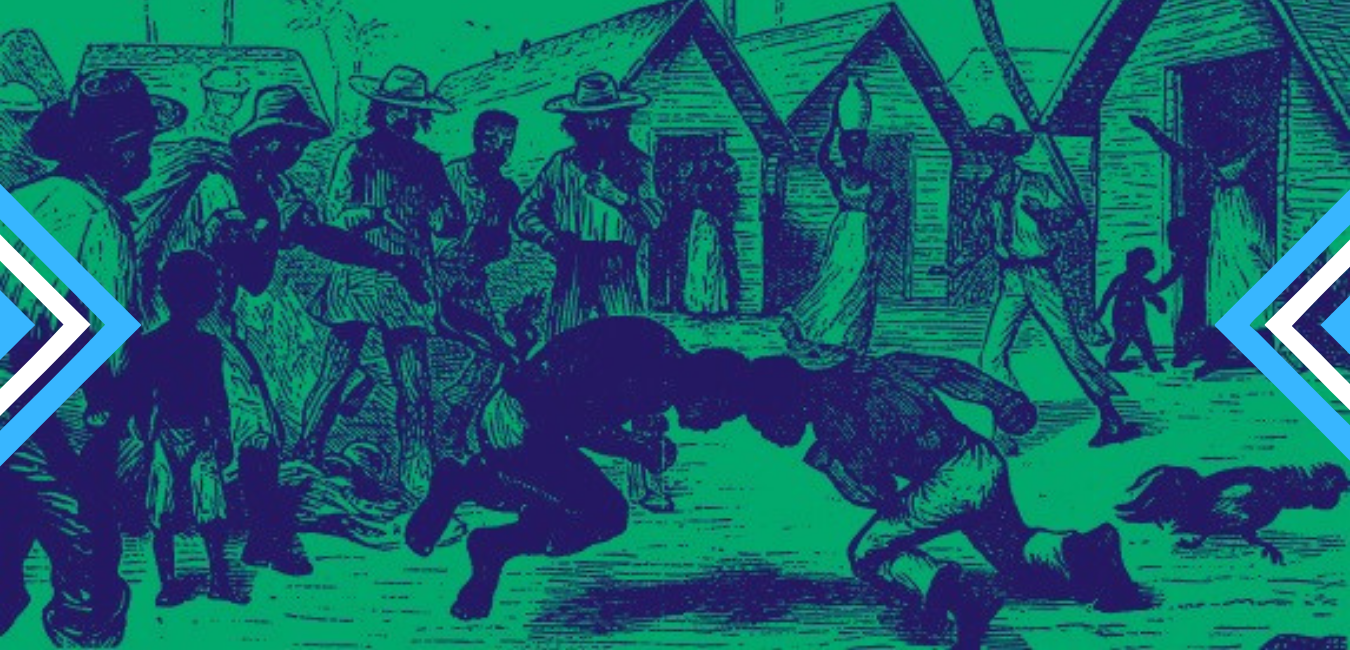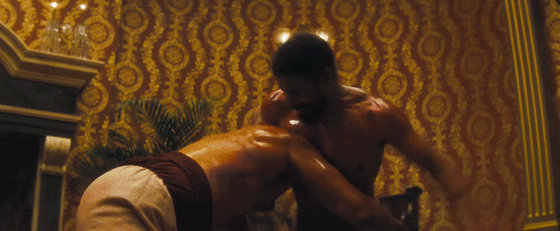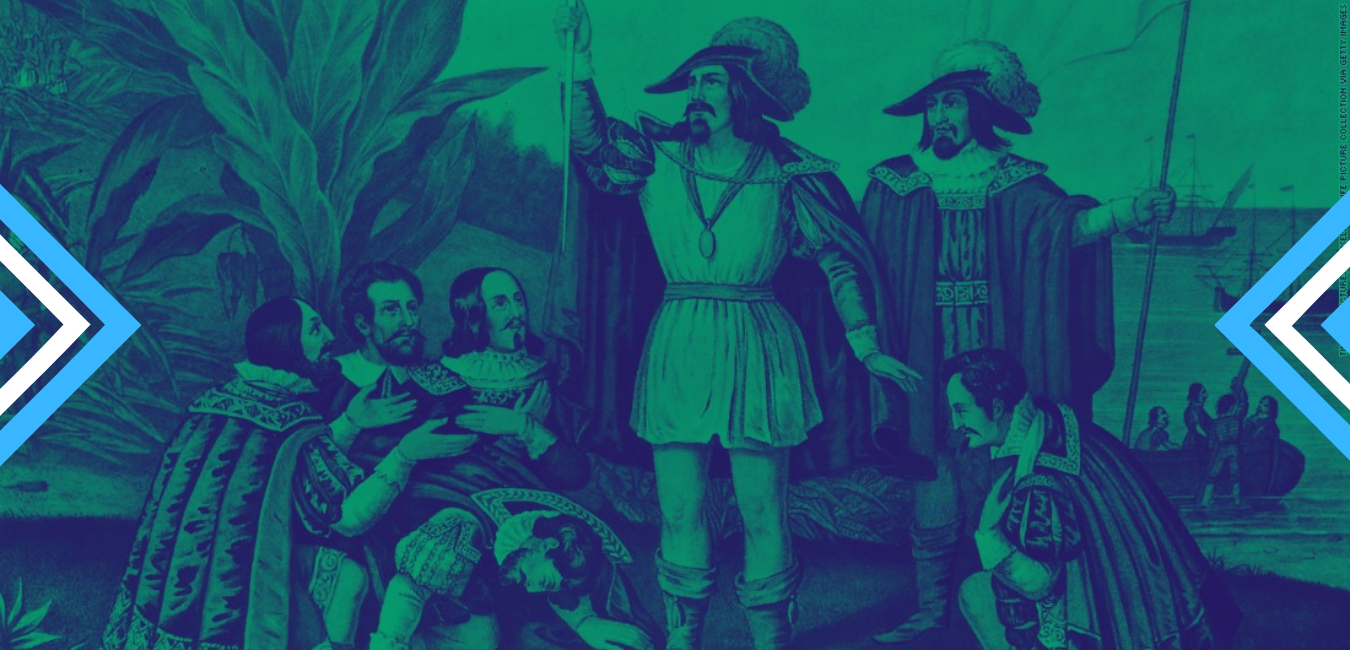|
(Disclaimer: This is not professional or legal advice. If it were, the article would be followed with an invoice. Do not expect to win any social media arguments by hyperlinking my articles. Chances are, we are both wrong).
(Trigger Warning: This article or section, or pages it links to, contains antiquated language referring to people of color which may be triggering to some.) A key plot point of Quentin Tarantino's western-blaxploitation-revenge movie "Django Unchained" is the supposed sport of Mandingo fighting, in which two slaves fight in a bare-knuckle deathmatch, for no reason other than the slaveowners' enjoyment. The search for the perfect Mandingo is what Tarantino builds the rest of his movie around. However, no slavery historian had ever come across anything that closely resembled this human version of cockfighting. That the very notion that Southerners would send off their slaves to die is logically flawed. Given that the entire structure of slavery was based on economic expedience, it just does not make much sense that a slave owner would be willing to lose one of his strongest and healthiest men to death for sport.
However, this does not hold for all combative sports, including wrestling.
Wrestling was a popular sport in Africa before they arrived in the United States. In the 18th and 19th centuries, sports among all cultures had similar foundations. African sports, even before slavery, involved many of the fundamental activities that African Americans participated in after their forced trek to America. The roots of traditional African sports included wrestling, jumping, running, ball games, and stick or spear throwing, all of which continued their cultural role as slaves from Africa adapted to a life of bondage in the United States. Wrestling in African culture during the early 18th century and preceding the 1700s was not only a popular cultural sport. Still, it was a meaningful celebration of life and a rite of passage. Wrestling was a major sport among Africans because their lives promoted themes of physicality and nature. To them, this sport represented a way of life. Many inland tribes who depended on animal husbandry and growing crops staged wrestling matches as a form of ritual to appease the gods to ensure agricultural success. Sports are a cultural touchstone of all civilizations. Boxing, running, wrestling, and horseracing were competitive sports popular in America during the 18th and 19th centuries. As British settlement, Native American, and European wrestling styles meshed in the 18th century, wrestling became one of the most popular sports in a much more modern country. As numerous sports bridge the gap between African and American culture when it comes to American slavery, all these types of recreational involvement show a distinct relationship with the recreational culture of the American slave. One may have heard of Capoeira, an Angolan martial art that combines dance, acrobatics, and music elements. Enslaved Africans practiced it in Brazil at the beginning of the 16th century. It is known for its acrobatic and complex maneuvers, often involving hands on the ground and inverted kicks. It emphasizes flowing movements rather than fixed stances. The dance and music were incorporated into the system to disguise the fact that they were practicing fighting techniques. After abolishing slavery in Brazil, Capoeira was declared illegal at the end of the 19th century. However, by the 1920s, authorities began to relax enforcement on its prohibition, and martial artists began incorporating the capoeira technique into their practices. In the deep South of the United States, a martial sports tradition similar to Capoeira evolved among the enslaved peoples called "Knockin," or "Knock boxing." This artform was a composite style that derived from a variety of Central and West African sport systems. This hybrid style included head butting (an Angolan practice), kicking, and hand striking, which technique took from the Angolan Engolo, a tradition of foot sweeps and high kicks, wrestling methods culled from the Senegalese art of Laamb.
Sports are often an escape for people. The cultural revolution of the American slave allowed the recreational habits formed during their time on the plantations to expand to numerous forms of athletic involvement. Not all these activities were necessary for survival, such as hunting or even wrestling or boxing matches among slaves. The variety of sports experienced on the plantation fulfilled other fundamentals of human endurance regarding the struggles of slavery, including personal connections with both their past and newfound cultures. Sports permitted Africans and ultimately African Americans the opportunity to develop a separate identity amidst slavery. Though popular throughout the entire country among the general free public, sports were an essential part of life for those deemed as property and any attempt to live life as human beings. Wrestling matches were quite common on southern plantations. These events were prominent among southern plantations and served as entertainment for slave masters and their families and the slaves living in the area. Owners predominantly purchased male slaves for their strength and physical prowess. These slaves were not only efficient field hands, but they also made for entertaining competitors within the confines of the ring. Although slaves primarily participated in sports on their own time and own terms, occasionally, the masters of the plantations would pit their most vigorous and most valiant slave against a slave from a neighboring plantation in boxing or wrestling matches. Ultimately, the plantation owner whose slaves have crowned victors would take the losing slave home. The loser, in other words, was the best in these competitions. Wrestling sometimes was a bridge between slave and master, one that seems plucked from a Hollywood film. Though most of the wrestling would pit two slaves against one another, it was in this arena that African Americans got the opportunity to be physical with their oppressors as well. A former slave interviewed in 1938 recalled this rare event, "en slavery time grown white boys would come to play en wrassle wid de "Niggers" Sho' would." However, this was seldom an occurrence. Instead, most wrestling matches were used as a vehicle for entertainment. Will Adams, a plantation slave who witnessed these sporting events, discussed the competitive sports played among slaves, "then massa have two niggers wrestle, and our sports and dances was big sport for the white folks."
Historians take note of the crossover into professional wrestling as well. Battle royals have existed as a type of combat sporting competition for more than 300 years. Historians can find advertisements in the Flying Post and Daily News of London as far back as the early 18th century. The contests they promoted were like modern battle royals. They involved several men fighting each other in a free-for-all mélée; the one significant difference was that the participants were boxers. The contests themselves were competed using the rules of boxing at the time. Ironically, the fact they were boxing matches made them resemble professional wrestling even more so, for boxing was a very different sport in those days. Wrestling was accepted as a proper part of boxing, and so were blatant fouls such as eye-gouging. However, as the 18th century came to an end, the public's appetite for battle royals soured, viewing them as "too barbaric and too dangerous for a place as civilized as the United Kingdom."
Battle royals did not die out, in any case. Instead, they immigrated to the American colonies, or more specifically, the Antebellum Southern States. There they would continue being practiced, not by those of British ancestry, but by the large slave population of African descent, who were most likely introduced to it by many Irish and Scottish settlers to that region. Reading the description given by two former slaves leaves little doubt that this was but another name for the battle royal: A ring was drawn on the ground, ranging from about 15 ft. to 30 ft. in diameter depending on the number of contestants who engaged in the combat. Each participant was given a bag stuffed with cotton and rags into a very compact mass. When so loaded, the bags would weigh on an average of 10 pounds and be used by the contestants in striking their antagonist. Each combatant picked whichever opponent he desired and attempted to subdue him by pounding him over the head with the bag, which he used as his weapon of defense. And which was used as an offending weapon. Masters continued the contest until every combatant was counted out, and a judge proclaimed a hero of the match. Sometimes two contestants were adjudged heroes. It was necessary to run a conflict between the two combatants before a judge could declare a final winner. … As many as 30 (blacks) were engaged in these battles, large audiences generally attended the contests. Being staged during favorable weather, mainly on Saturday afternoon, these physical exhibitions were the scenes of much controversial conflict, gambling, excessive drunkenness, and hilarity. As the evolution of the American slave expanded over time, the actual roots may have arguably faded. Nevertheless, the new local custom of sports and recreation, including wrestling, continued in a new light. Wrestling would find popularity among the slave quarters of African and African American slaves and in the sports realm of America, where the advancement of these sports would become a social craze. Though the white race dominated sports in American society during the era of slavery, the impact of slave athletics would be lasting in the realm of American sports post-antebellum as well.
In an interview with the Works Progress Administration in the 1930s, ex-slave John Finnely described something called "nigger fights." According to Finnely, plantation owners organized these fights at annual festivals attended by both owners and slaves. There was singing and dancing, a welcome respite from the daily labor on cotton farms. Some slaves looked at festival time with dread, however. According to Finnely, plantation owners would pick out their most brutal slaves and match them against their neighbors' slaves according to size as the sunset on festival days. Masters would then place bets on combatants and prepare them for combat. The fight would take place in a human circle made up of masters and slaves.
Sports are also sometimes a means of control. As a form of indulgence on the atypical customary holidays such as Christmas and on weekends, slaves prominently played sports when given small allotments of time off. Many slaves partook in other sporting events apart from the previous competitions during their rare moments of rest. Slave athletics included sports of endurance and skill such as running and swimming, proving that their athletic endeavors did not solely focus on physical brutalities like wrestling. During what few holidays masters afforded the slaves, they would often gather for music, dancing, and sport. Ball playing, foot races, wrestling, and boxing were all exhibited during this "leisure" time. According to Frederick Douglass, wrestling and boxing for sport, like festivals around holidays, were "among the most effective means in the hands of the slaveholder in keeping down the spirit of insurrection." These "low" sports, as Douglass described them, were encouraged by plantation owners. This encouragement had nothing to do with any sense of altruism. If you were kept busy fighting for scraps among each other, then slaveowners could push important things to the wayside, like reading, writing, or even planning an insurrection. WORK CITED Bednarski, John. "How African Martial Arts in the United States influenced “Western” Boxing and Wrestling." SOA. Last modified June 7, 2020. https://schoolofarmsmedia.com/blogs/soa-blog/how-african-martial-arts-in-the-united-states-influenced-western-boxing-and-wrestling. Griffith, Jon. "Sports in Shackles: The Athletic and Recreational Habits of Slaves on Southern Plantations." Voces Novae 2, no. 1 (2018). Harris, Aisha. "Was There Really “Mandingo Fighting,” Like in Django Unchained?." Slate. Last modified December 24, 2012. https://slate.com/culture/2012/12/django-unchained-mandingo-fighting-were-any-slaves-really-forced-to-fight-each-other-to-the-death.html. Nash, Josh S. "Wrestling With The Past: The Bizarre Origins of the Battle Royal - Part One." SB Nation. Last modified March 9, 2013. https://www.cagesideseats.com/2013/3/9/4028970/battle-royal-WWE-Boxing-wrestling-with-past-origins-history-combat-sports-part-one.
1 Comment
Strike
8/18/2021 09:57:46 am
Educational article on wrestling slaves. Thank you for sharing!
Reply
Leave a Reply. |
AuthorRyan Lancaster wears many hats. Dive into his website to learn about history, sports, and more! Archives
March 2024
Categories |





 RSS Feed
RSS Feed